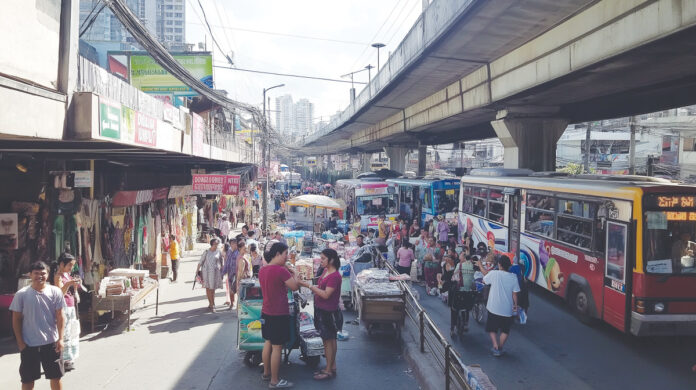It was an early Monday morning in one of the busiest parts of Manila. The city pulsed with life as a sea of people filled the sidewalks and streets. From students hurrying to their morning classes, office workers briskly walking toward their destinations, to vendors calling out to passersby, the energy was electric. A section of Rizal Avenue, right under the elevated Doroteo Jose LRT Station, became a crossroad of movement and interaction. People descended from the station’s platform in waves, while others climbed up the stairs, their hurried steps echoing against the steel and concrete.
Below, the street was alive with commerce. Mobile vendors weaved their way through the crowd, selling an assortment of goods—ripe bananas hanging from bamboo sticks, plastic bags filled with peanuts, and colorful packs of local chips. The scent of freshly cooked street food wafted in the air, mingling with the honks of jeepneys that waited impatiently for passengers, their engines idling as the jeepney “barkers” called out destinations.
“Quiapo! Quiapo! Isa na lang!” they shouted, their voices a familiar soundtrack of the morning hustle. Meanwhile, “Angkas” motorcycle taxis swiftly maneuvered through the congestion, picking up and dropping off commuters in rapid succession.
The entire scene appeared chaotic at first glance, an explosion of movement and sound. Yet, beneath this apparent disorder was an intricate rhythm, a dance of urban survival and cultural expression. The towering LRT station cast a shadow over the street, shielding the people below from the direct glare of the sun, while the tangled mess of electrical wires crisscrossed above like an unintentional urban art installation—a symbol of Manila’s unyielding spirit.
Despite the congestion, laughter could be heard amid the commotion. A street vendor cracked a joke with a customer, a group of students playfully nudged each other as they walked, and a jeepney driver exchanged friendly banter with a passenger he recognized. There was a sense of familiarity, an unspoken camaraderie among strangers who shared this daily dance of urban life. Manila, in all its complexity, carried the essence of Filipino resilience—a people who could find joy in the hustle, who smiled despite the morning rush.
For those who had been away from the country for years, this scene was more than just a reminder of home—it was proof of the unwavering spirit of the Filipino people. Yes, the city still bore the mark of its old hustle, but it had also embraced progress. The streets that were once unpaved and dimly lit were now lined with improved sidewalks, pedestrian lanes, and even traffic enforcers who managed the flow of vehicles with more efficiency than before. The LRT system itself had undergone upgrades, making commuting more convenient and accessible.
Beyond this bustling corner of Manila, the country had seen significant advancements. Infrastructure projects had given rise to modern highways, bridges, and expressways, cutting travel time and connecting once-distant provinces. Digital innovations made daily transactions smoother, from e-payments to government services now available online. The economy was growing, businesses were thriving, and opportunities for Filipinos, both at home and abroad, continued to expand.
For those who had been away, the Philippines had not remained stagnant—it had evolved. The laughter in the streets, the hum of city life, and the warmth of its people remained the same, but there was a new air of optimism, a forward momentum toward a better future. Yes, Manila was still Manila—chaotic, lively, and unapologetically Filipino—but it now stood as a testament to progress, proving that the country was marching toward a brighter, more dynamic tomorrow.
To those who had not set foot in their homeland for a long time, the invitation was clear: come and see the changes, experience the growth, and witness how the Philippines, in its own unique and vibrant way, was moving forward.
By Joe Larano Jr.
(Contact:jblarano@gmail.com)



